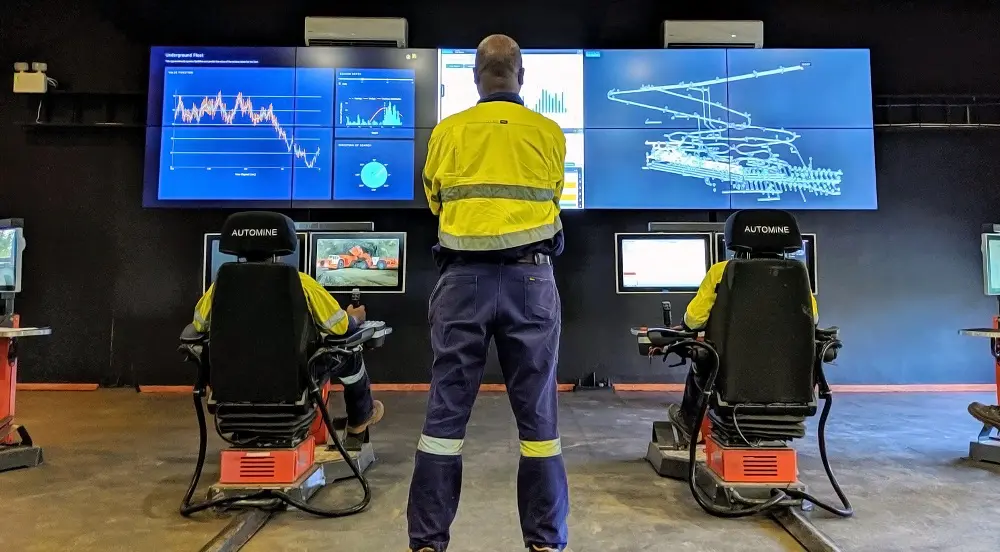The mining industry has long been synonymous with hard labor, complex operations, and significant risks. However, recent advancements in automation technology are transforming this landscape, making mining safer, more efficient, and environmentally friendly. This article explores the various facets of automation in mining, including its benefits, challenges, and the technologies driving this evolution.
The Rise of Automation in Mining
Automation in mining refers to the use of advanced technologies to perform tasks traditionally carried out by human workers. This includes everything from automated drilling and blasting to autonomous haulage systems. As the demand for minerals continues to rise, and as companies face increasing pressure to enhance productivity and safety, the adoption of automation has accelerated.
Key Benefits of Automation
- Enhanced Safety:
- One of the most significant advantages of automation is the potential to improve safety. By removing workers from hazardous environments—such as underground mines or areas with heavy machinery—companies can reduce the risk of accidents and injuries.
- Increased Efficiency:
- Automated systems can operate around the clock without breaks, leading to higher productivity. Tasks that typically require significant time and labor can be completed faster and more efficiently with automated technology.
- Cost Reduction:
- While the initial investment in automation technology can be substantial, the long-term savings often outweigh these costs. Reduced labor expenses, lower accident rates, and improved operational efficiencies can lead to significant cost reductions over time.
- Improved Precision and Quality:
- Automation technologies, such as robotic drills and autonomous vehicles, can perform tasks with high precision, leading to improved ore recovery rates and reduced waste. This not only enhances profitability but also minimizes the environmental footprint of mining operations.
- Data-Driven Decision Making:
- Automated systems can collect and analyze vast amounts of data in real-time. This data can be used to optimize operations, predict equipment failures, and make informed decisions about resource management.
Technologies Driving Automation
- Autonomous Vehicles:
- Self-driving trucks and haulage systems are increasingly being used in mining operations. These vehicles can transport ore and waste with minimal human intervention, improving efficiency and safety.
- Robotic Drilling Systems:
- Automated drilling rigs can operate in challenging environments, improving precision and reducing the risks associated with manual drilling. These systems can be programmed to perform complex drilling patterns and optimize drilling parameters.
- Drones and UAVs:
- Unmanned aerial vehicles (UAVs) are being utilized for site surveys, mapping, and monitoring environmental conditions. Drones can cover large areas quickly and provide valuable data for decision-making.
- Remote Monitoring and Control:
- Advanced sensors and monitoring systems allow operators to control equipment remotely, providing a safer and more flexible work environment. This technology is particularly useful in underground mining, where conditions can be hazardous.
- Artificial Intelligence (AI) and Machine Learning:
- AI algorithms are being integrated into mining operations to analyze data and improve decision-making. These technologies can help optimize resource extraction, predict maintenance needs, and enhance safety protocols.
Challenges of Automation in Mining
- High Initial Costs:
- The transition to automated systems often requires significant capital investment. Many companies may struggle to justify these costs, especially in fluctuating markets.
- Skills Gap:
- As mining becomes more technologically advanced, there is a growing need for a skilled workforce capable of operating and maintaining automated systems. Training and education are essential to bridge this skills gap.
- Integration with Existing Systems:
- Implementing automation in established mining operations can be challenging. Companies must ensure that new technologies can integrate seamlessly with existing processes and systems.
- Cybersecurity Risks:
- With the increasing reliance on connected devices and systems, mining operations become more vulnerable to cyberattacks. Protecting sensitive data and ensuring system integrity is crucial.
- Cultural Resistance:
- The shift toward automation can meet resistance from employees concerned about job security. Addressing these concerns and promoting the benefits of automation is essential for a successful transition.
Conclusion
Automation is reshaping the mining industry, offering significant benefits in terms of safety, efficiency, and sustainability. As technologies continue to evolve, the potential for further advancements in automation will only increase. While challenges remain—such as initial costs and workforce adaptation—the long-term advantages of automation in mining are compelling. Embracing these changes will not only enhance operational performance but also contribute to a safer and more environmentally responsible mining future. As the industry moves forward, the integration of automation will be a key factor in its continued evolution and success.



